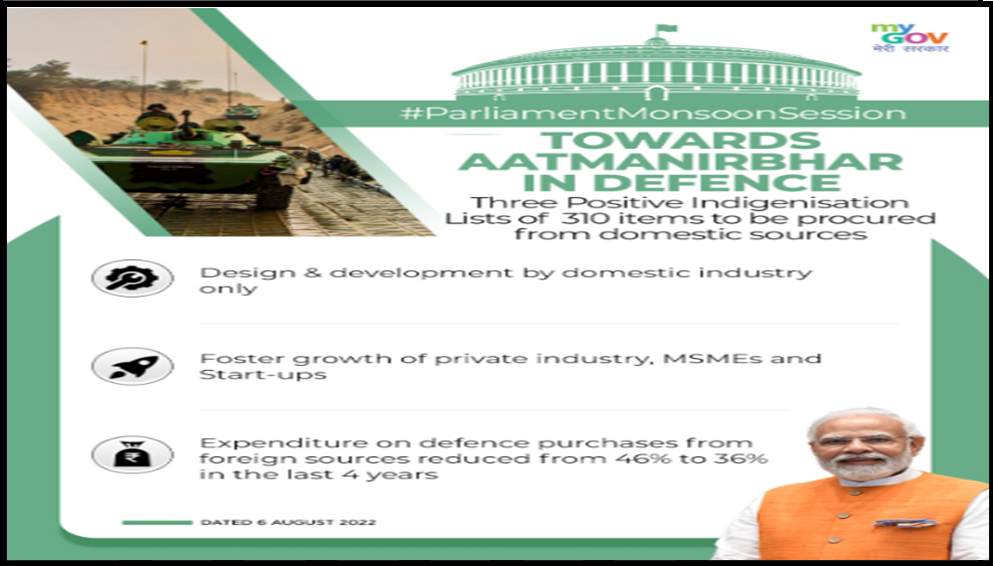Discuss the significance of emerging technologies in modern warfare. Critically evaluate the challenges faced by the Indian military in integrating emerging technologies and outline the initiatives undertaken by the Indian military to embrace these advancements.
| Structure of Answer
Introduction · Briefly explain evolution of emerging technologies in Modern warfare Body · Mention Significance of Emerging Technologies in Modern Warfare · Mention Challenges Faced by the Indian Military · Mention Initiatives Undertaken by the Indian Military to embrace emerging technologies. Conclusion · Mention era of emerging technologies requires not just the acquisition of cutting-edge tools but a fundamental shift in mindset and organizational structures. |
Answer-
The evolution of warfare is undergoing a seismic shift propelled by emerging technologies. From artificial intelligence, robotics to space warfare, these advancements are reshaping the modern battlefield, introducing unprecedented capabilities and fundamentally altering the dynamics of military operations. The convergence of these technologies heralds a new era in the realm of conflict.
Significance of Emerging Technologies in Modern Warfare
- Enhanced Situational Awareness and Decision-Making: Technologies like artificial intelligence (AI) and sensor fusion provide commanders with a comprehensive understanding of the battlefield. Example: Real-time data analytics enable rapid decision-making, giving military leaders a strategic advantage.
- Increased Precision and Lethality: Precision-guided munitions and autonomous systems enhance the accuracy of strikes, minimizing collateral damage. Example: Drone strikes with pinpoint precision reduce civilian casualties and increase the effectiveness of military operations.
- Non-Kinetic Warfare Capabilities: Cyberwarfare and electronic warfare disrupt enemy capabilities without physical engagement. Example: Stuxnet, a computer worm targeting Iran’s nuclear program, showcasing the potency of cyber warfare.
- Enhanced Defense and Protection: Advanced armor materials and electronic countermeasures provide improved protection for troops and equipment. Example: Active protection systems intercept incoming threats, enhancing overall defense capabilities.
- Expanded Operational Reach: Unmanned aerial vehicles and space-based surveillance extend military forces’ operational reach. Example: Drones enable reconnaissance in remote areas, allowing for strategic advantages in challenging environments.
Source: Avascent.com
Challenges Faced by the Indian Military
- Limited Budgetary Allocation: Indian military allocates approximately $50 million annually for AI spending, a fraction of China’s investment. The Delhi Policy Group highlights the inadequacy of this budget, emphasizing the need for greater investments to avoid falling behind in the technology cycle.
- Lack of Jointness and Interoperability: Despite the mandate for joint theater commands, achieving jointness among the three services remains a challenge. Interoperability, crucial for integrating emerging technologies, requires a concerted effort to overcome existing barriers.
- Human Resources Practices: The military’s emphasis on generalization over specialization poses a challenge in adopting specialized technologies. Creating promotion pathways and extended tenures for officers inclined towards emerging technologies is imperative for success.
- Secrecy Concerns and Data Sharing: Traditionally, secrecy concerns impede data sharing between civilian and military entities. Overcoming these concerns requires establishing structures with adequate safeguards, facilitating collaboration without compromising national security.
- Resistance to Organizational and Doctrinal Changes: The military’s tendency to view technology as a ‘plug and play’ solution without accompanying organizational and doctrinal changes hinders successful integration.
Source: mygov.in
Initiatives Undertaken by the Indian Military
- S.-India iCET Initiative: Collaborative efforts with the U.S. in the Critical and Emerging Technology domain, showcasing a commitment to stay at the forefront of technological advancements.
- AGNI-D AI-based Surveillance Software: Deployment of advanced AI-based surveillance software in the Ladakh sector for real-time monitoring and threat detection.
- UDAAN in the Indian Air Force: Utilization of AI, cyber, and virtual reality under ‘UDAAN’ to address operational, logistical, and training needs.
- Integrated Unmanned Roadmap in the Navy: under the ‘Swavlamban’ project, is pursuing Integrated Unmanned Roadmaps, emphasizing indigenous solutions.
- AIDef Initiatives: Showcasing initiatives like the Defence AI Council and Defence AI Project Agency aimed at incorporating AI into allied organizations.
India stands at the crossroads of a technological renaissance in its military capabilities. The journey into the era of emerging technologies requires not just the acquisition of cutting-edge tools but a fundamental shift in mindset and organizational structures. As the nation treads this transformative path, collaborative endeavors and openness to change will be the catalysts that propel India’s military into a future defined by innovation, adaptability, and technological prowess.
Source:https://www.orfonline.org/research/emerging-technologies-and-indias-defence-preparedness/

 Source: Avascent.com
Source: Avascent.com Source: mygov.in
Source: mygov.in



